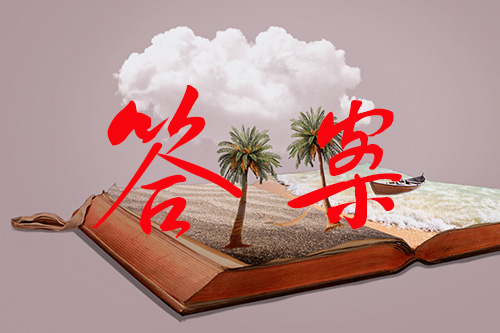2024-2025学年吉林省长春市第八十九中学期初测试八年级开学考试 英语试卷答案,我们目前收集并整理关于2024-2025学年吉林省长春市第八十九中学期初测试八年级开学考试 英语得系列试题及其答案,更多试题答案请关注本网站

2024-2025学年吉林省长春市第八十九中学期初测试八年级开学考试 英语试卷答案
以下是该试卷的部分内容或者是答案亦或者啥也没有,更多试题答案请关注本网站
M:I see.We've put a story that he wrote back in March in the school newspaper.You should have
read it.But there were many words spelt wrong in his work.
W:Yes,we have tried to help him at home.His sister,Kathy,often tests him on words that he
often gets wrong.I'm sure that's helpful,isn't it
M:Oh,yes,without doubt.
第1页共3页2023一2024度(下)联合体高二期末检测
英语
31.What is Heidi Hoven’s attitude towards the drying Great Salt Lake
A.Optimistic. B.Uncaring. C.Relieved. D.Worried.
D
The Chinese Academy of Sciences(CAS)has released the highest -resolution geological maps of the Moon yet. The Geologic Atlas(地图集)of the Lunar Globe, which took more than 100 researchers over a decade to complete, reveals a total of 12,341 craters(火山口),81 basins and 17 rock types, along with other basic geological information about the lunar surface. The maps were made at the unheard-of scale of 1:2,500,000.
Jianzhong Liu, a geochemist at the CAS Institute of Geochemistry in Guiyang and co-leader of the project, says that existing Moon maps date from the 1960s and 1970s. “The US Geological Survey used data from the Apollo missions to create a number of geological maps of the Moon, including a global map at the scale of 1:5,000,000 and some regional, higher-accuracy ones near the landing sites,” he says. “Since then, our knowledge of the Moon has advanced greatly, and those maps could no longer meet the needs for future lunar research and exploration.”
The atlas used data from China’s lunar exploration programme, especially the Chang’e -1 mission’s observation of lunar topography(地形)and geological structures, according to Liu. Observations made on the Moon’s surface by the Chang’e -3 and Chang’e -4 lander missions in 2013 and 2019, respectively, helped to confirm the accuracy of the Chang’e -1 data. The atlas team also used data from missions such as the GRAIL and the Lunar Reconnaissance Orbiter, both launched by NASA, and India’s Chandrayaan-1 probe.
“Contributing to lunar science is a profound way for China to establish its potential role as a scientific powerhouse in the decades to come,” says Mitchell, a geophysicist at the CAS Institute of Geology and Geophysics in Beijing. With the update d atlas, scientists will be able to better understand the history of the Moon, find potential lunar resources and conduct comparative geological studies. Liu says the completed atlas has been put into a cloud platform called the Digital Moon, and will eventually become available to the international research community.
郑重声明:本文版权归原作者所有,转载文章仅为传播更多信息之目的,如作者信息标记有误,请第一时间联系我们修改或删除,多谢。
